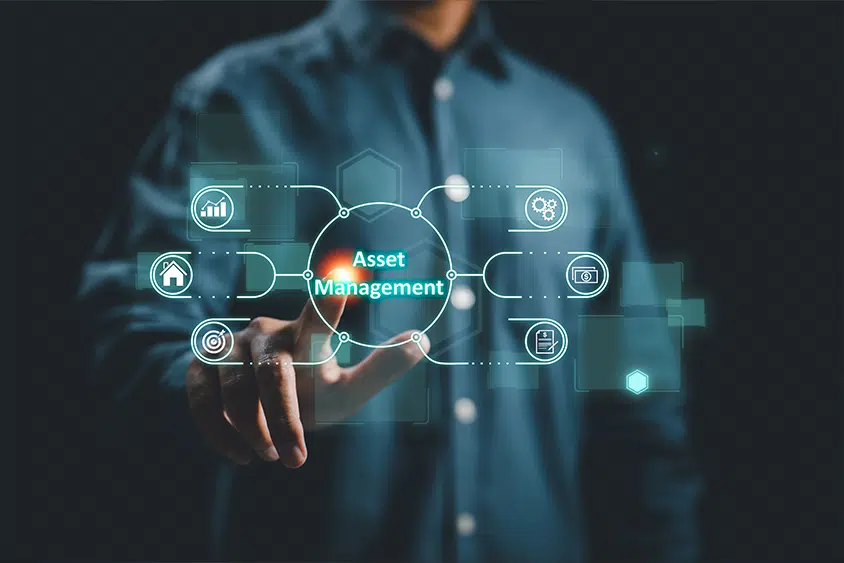View all of our Compliance Solutions


When searching through all your physical assets it may surprise you just how many there are; It is crucial to perfect your asset-tracking practices to make the most of these resources.
These practices involve scanning barcode labels or using GPS and RFID tags to pinpoint your asset’s location.
Every business, including yours, should prioritise asset tracking and inventory management because it offers valuable information about asset status, scheduled maintenance and other important information.
This allows for successful business operations. It enables organisations to optimise resource allocation, reduce operational costs, ensure compliance and enhance overall productivity.
Asset tracking involves overseeing and managing an organisation’s physical assets, which can include anything from office equipment to vehicles, IT assets, machinery, and more.
Although it is sometimes viewed as time-consuming and expensive, there are asset tracking methods, such as asset management software, that can save both time and money.
The main goal of any asset tracking system is to enhance asset control efficiency while reducing equipment loss. Asset management software allows for real-time asset tracking, leading to more efficient production planning and minimised downtime.
An asset management software can also schedule necessary maintenance and servicing, including preventive maintenance. Additionally, it incorporates barcode technology, allowing fixed assets to be scanned for accurate and efficient tracking.
Data is gathered via barcodes to aid in asset tracking. Each asset is assigned a unique barcode, enabling individual recognition and tracking. These barcodes contain essential business information, such as location, service history, ROI, and more. Barcode scanners read each barcode, facilitating faster and more accurate asset counting while eliminating the risk of human error.
There are many benefits of Telematic asset tracking, some key ones include:
Streamline record-keeping as equipment is transferred between departments, ensuring updated information for tax and departmental cost calculations.
Quickly locate assets in real-time, reducing the resources needed for additional asset tracking.
Eliminate the need for manual asset tracking and locating, leading to reduced administrative expenses.
Accurately track and minimise asset loss while enhancing the effective use of assets.
Monitor, manage, and scale your asset tracking in line with your company’s growth.
Establish accountability and accuracy in asset management and loss prevention.
Improve company space organisation by identifying co-accessed items and wasted space, enhancing the physical system’s structure.
In many industries, accurate asset tracking is essential for regulatory compliance.
Obtain real-time reports on all assets, increasing the accuracy of asset management.
Ensure assets are allocated efficiently to avoid underutilisation, this allows your budget to be used efficiently without any wastage.
Schedule and conduct timely preventive maintenance to extend asset life cycles.
Prevent asset loss with real-time tracking and alerts.
Reduce operational costs through better asset management and utilisation.
Here are a couple of things to think about before implementing these Telematics into your company.
Comprehensive training should be provided for users to maximise the effectiveness of the asset tracking system.
Ensure the system can grow with your organisation, accommodating an increasing number of assets over time.
Ensure the asset tracking system complies with industry regulations and standards.
Consider the total cost of ownership, including initial setup, maintenance, and potential upgrades.
Consider the ability to track assets using apps on mobile devices for greater flexibility and convenience whilst on the move.
Over time it is natural for your business to grow, with your asset tracking needs changing as a result of this. You must scale your asset tracking system and future-proof it to meet these evolving requirements.
Asset management software ensures precise data collection, entry, and validation.
Use barcodes to label assets for easy identification and tracking.
Conduct routine audits to maintain data accuracy and detect discrepancies.
Ensure your team understands the asset tracking system and follows best practices.
Asset management tracking software allows for streamlined operations and integrating asset tracking with this software can bring even further benefits.
Asset management software provides a central database for all asset-related information.
Automating asset tracking processes minimises manual errors and saves time.
Use asset management software to generate insightful reports and perform data analysis.
Receive real-time notifications about maintenance schedules, loss prevention, and compliance deadlines.
Inaccurate data can not only lead to inefficiencies but also costly errors. To ensure data accuracy and consistency are achieved through your asset tracking systems, you will need:
Ensure data accuracy by validating entries at each point and during audits.
Keep asset information current by updating records as assets change status or location, facilitated by your asset management software.
Implement standardised procedures across your organisation to prevent data discrepancies.
Periodically clean up outdated or irrelevant data to maintain an efficient system.
Many industries have specific compliance requirements related to asset management.
Smart asset management solutions meet regulatory requirements for various industries, including but not limited to healthcare, finance, and education.
Asset tracking systems help maintain necessary documentation and generate compliance reports.
Ensure your business is always ready for an audit with accurate and up-to-date asset records.
As your business grows, your asset-tracking needs will need to adapt and evolve. Be sure to scale your asset tracking system and future-proof it against changing requirements.
Expand your asset tracking system to accommodate more assets and locations.
Choose an asset-tracking solution that is compatible with future technologies and software.
Prepare your business for emerging technologies and trends with asset tracking.
Telematics systems are essential for efficient asset tracking. By integrating Telematics with asset management, you gain real-time insights into asset location, usage, and performance.
This service integration helps optimise asset utilisation, reduce operational costs, and enhance overall asset management efficiency.
Have you got further questions for us? Get in touch with our friendly team today.